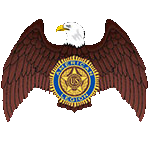CPAP ALTERNATIVES FOR SLEEP APNEA
Generally, surgery should not be a first-line treatment.
I was diagnosed with sleep apnea and have been trying to use a CPAP device for the past six months, but I cannot tolerate it. Are there any alternative treatment options?
Obstructive sleep apnea (OSA) is a sleep disorder that occurs when a blockage of the airway prevents you from breathing during sleep. OSA blockages can be caused by your tongue or relaxed throat muscles. If left untreated, OSA is linked to daytime sleepiness and an increased risk of anxiety, diabetes, hypertension and stroke.
The primary treatment for people with moderate or severe OSA is a continuous positive airway pressure (CPAP) machine. This device keeps your airway open by pumping air through a mask that is worn over the mouth and/or nose when sleeping. Losing weight, giving up smoking and limiting alcohol can all help ease the symptoms of OSA, such as snoring.
However, many individuals have difficulty tolerating CPAP machines and will not use one because they are noisy and uncomfortable. Fortunately, newer CPAP machines have become smaller and quieter, with more comfortable options available. For some people with mild to moderate OSA, less invasive alternatives to CPAPs may be worth considering. Here are several treatments to ask your doctor about.
Dental device: This is designed to move the jaw so that the tongue shifts toward the front of the mouth to help keep the airway open. It is one of the primary alternatives to CPAP machines and can also be used alongside a CPAP device to help make severe OSA milder.
A dentist who specializes in sleep medicine will be able to customize and fit it to help your breathing without causing harm to your bite or teeth. These custom-made oral appliances can cost between $2,000 and $4,000 but may be covered by insurance.
There are more affordable options available online to treat snoring, but experts say these may not help with OSA and could move teeth out of place or cause jaw issues if they are not properly fitted.
Position therapy: For some, sleeping on the back can make OSA dramatically worse. In these cases, switching to side sleeping – perhaps using pillows or a tennis ball attached to the back of a shirt – can sometimes help.
Tongue trainer: In 2021, the Food and Drug Administration approved a tongue-stimulating device for mild sleep apnea. These devices are worn for 20 minutes a day for six weeks, and 20 minutes twice a week thereafter.
Surgery: Those who cannot tolerate CPAP machines could have upper airway surgery to reduce the size of their soft palate or other tissue in their throat. However, surgery could have serious potential complications and results cannot be guaranteed or reversed. Generally, this should not be a first-line treatment.
A newer option is a surgically implanted device referred to as an upper airway stimulator. The implant stimulates a nerve that moves your tongue to keep your airway open and can be removed if it is not tolerated. This option should also be tried only if someone is unable to use a CPAP device.
Drug therapy: A study recently published in The New England Journal of Medicine found that tirzepatide – the main ingredient found in type 2 diabetes medication Mounjaro and weight loss treatment Zepbound – helps reduce symptom severity by almost two-thirds in adults with obesity and obstructive sleep apnea. Ask your doctor about this option.
For more information on diabetes and pre-diabetes or to find help, join a lifestyle change program recognized by the CDC. These programs offer in-person and online classes in more than 2,100 locations throughout the United States.




